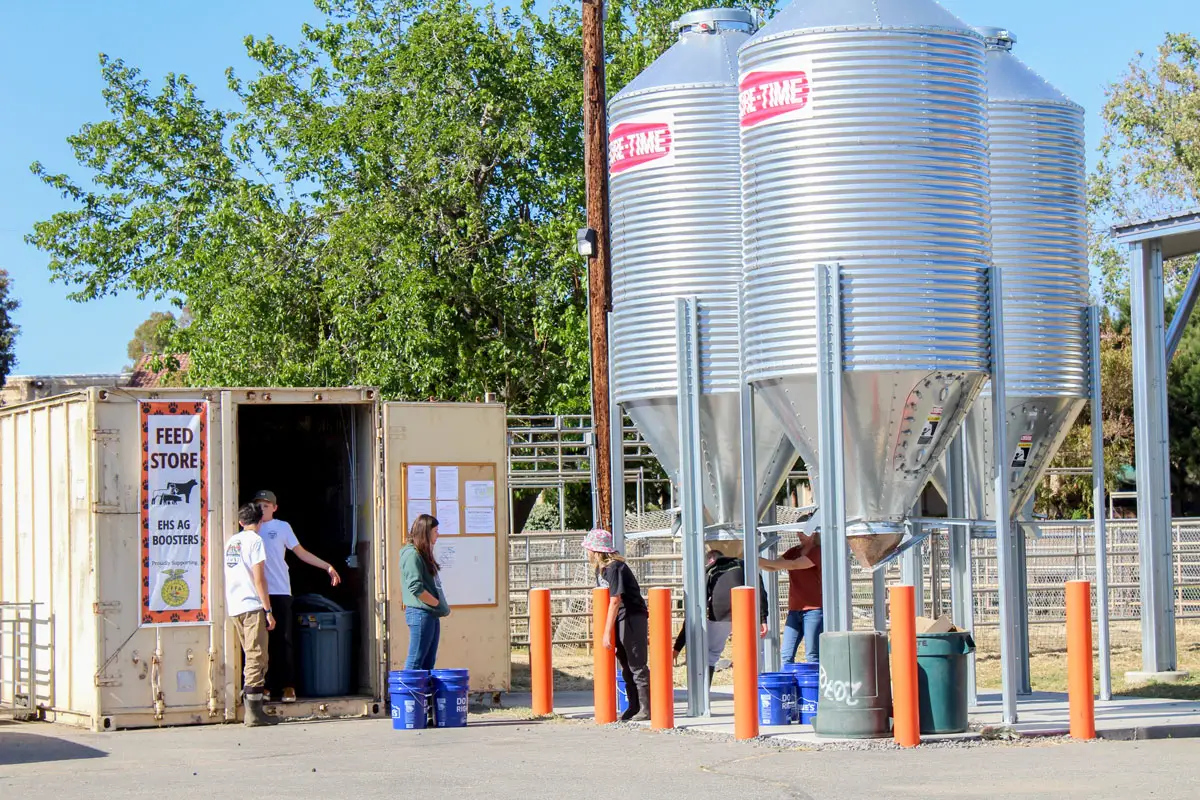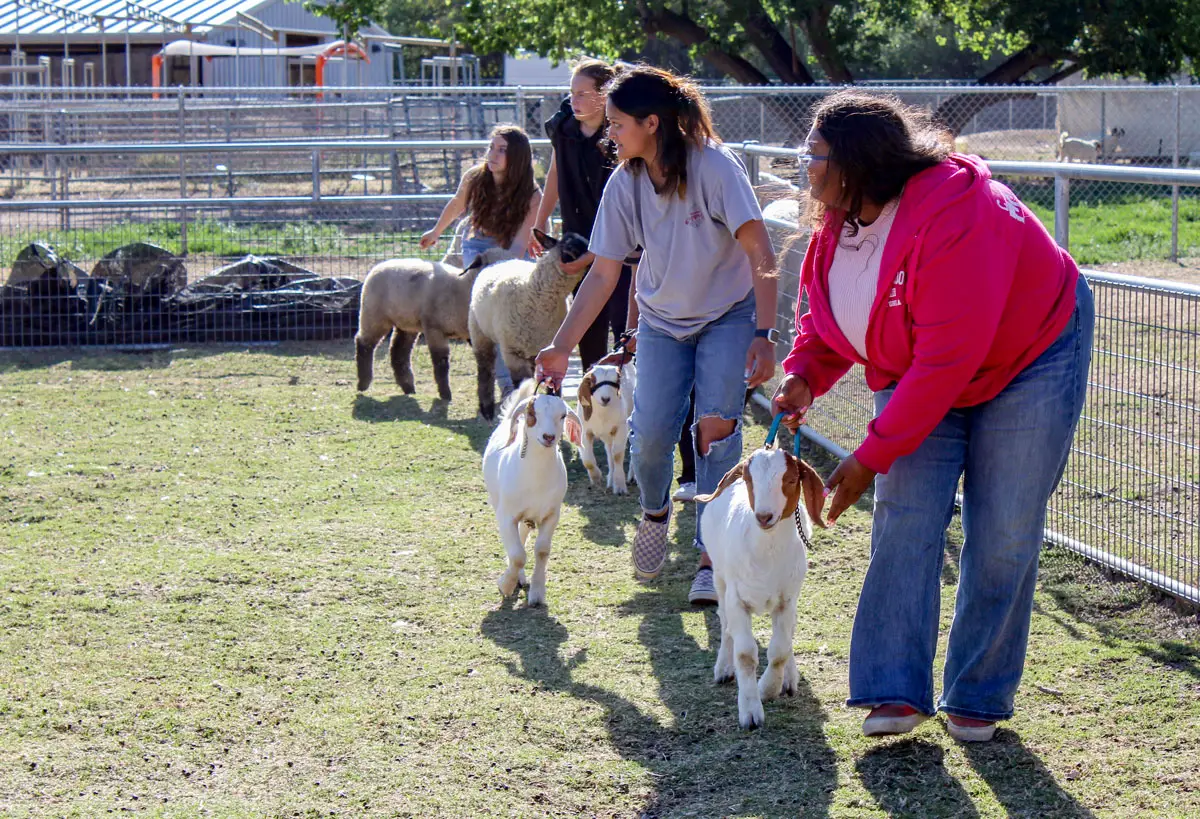ESCONDIDO — A year roiled by inflation and supply-chain issues provided students in the Future Farmers of America program at Escondido High School an opportunity to learn firsthand about the real challenges facing the agriculture industry.
Students in the school’s Future Farmers of America program are responsible for the purchase and maintenance of their livestock — raising up to three animals each year — which they show at county fairs and eventually sell.
But just like professional farmers, students aren’t immune to volatile economic times.
In 2021, agriculture market watchers reported that hog, cattle and chicken feed increased more than 10% in each category due to inflation, with pig feed increasing the most at 14%. Additionally, student profits over the last few years have been less than desired.
“Livestock costs are increasing and the students weren’t making enough profit in the last few years,” said Marc Reyburn, EHS agriculture teacher. “So, we felt the need to lower those costs.”

To lower the students’ costs, the Escondido Unified School District and agriculture boosters stepped up to facilitate profit grabbing for students, said Kim Deile, treasurer of the Escondido High School Ag Boosters.
Students now have access to three-grain bins filled with livestock feed for between $4 and $5 per 50-pound bucket, which are courtesy of Lowes.
The silos, filled every other month, are helping keep costs down and products available to students. Reyburn said the savings amount to roughly $200 per student.
“Agriculture is not for the weak-hearted,” said Rowlynda Moretti, of Carrisito Ranch in Julian, explaining that the increases in feed costs are high, but change is normal. “You’re definitely not in control of grain prices, we’re not in control of how much it’s going to rain. You have no idea what’s going to come at you [as a farmer].”
Depending on the type of feed, the cost can range from $25 to $35 per 50-pound bag.
“Some are even more than that,” Reyburn said, who remembers paying $6 for a bag of feed when he was in Future Farmers of America more than 20 years ago.

The program’s students are learning to strategize with the inevitable ebbs and flows of agriculture, just like their professional counterparts.
In San Diego County, other hog managers have seen so much as a $1.50 jump in feed bags over the past year. Marty Koontz, who operates Grazin Pig Acres with his wife Nancy, said he has loosely considered getting a silo to relieve some of the pressure.
“That’s the major benefit of these ag programs,” Moretti said, “it’s learning how to keep a book and how to keep track of your costs.
“We want them to make money, that’s the whole point. They’re learning firsthand how to make money and learning how to manage profits and loss,” she said.
Samantha Santos, a senior at EHS, pays about $100 a year now to feed her goats. This year she hopes to make around $500 for her goats, which she based on her four-year experience. The most she has sold a goat for is $800.
Santos, like the 59 other students in Escondido High School’s farm program, does not have an agriculture background. This demographic largely mirrors the farmers of San Diego County, who live on the edge of urban and rural influences.
“I live in a city, before this, I didn’t know how animals were taken care of,” the goat intern explained, adding the Future Farmers of America helped her find her future career.
Now, Santos plans to go to college to become a veterinarian for large animals. She’s not the only one, either.

Shelley Kreeger said her son, Fisher, is the chicken and tractor intern with the Future Farmers of America. Interns become the go-to helper in their designated section on the school’s farm.
Fisher’s involvement with the meat birds and equipment ignited a positive change in him that made his mother beam — one that many of the students felt toward their involvement.
“It’s not every day you get a bunch of kids willing to scoop up poop,” said James Shoopman, a freshman hoping to make $600 in his first year at EHS.
For sure, though, Shoopman said, he plans to stay involved with agriculture throughout his life.



